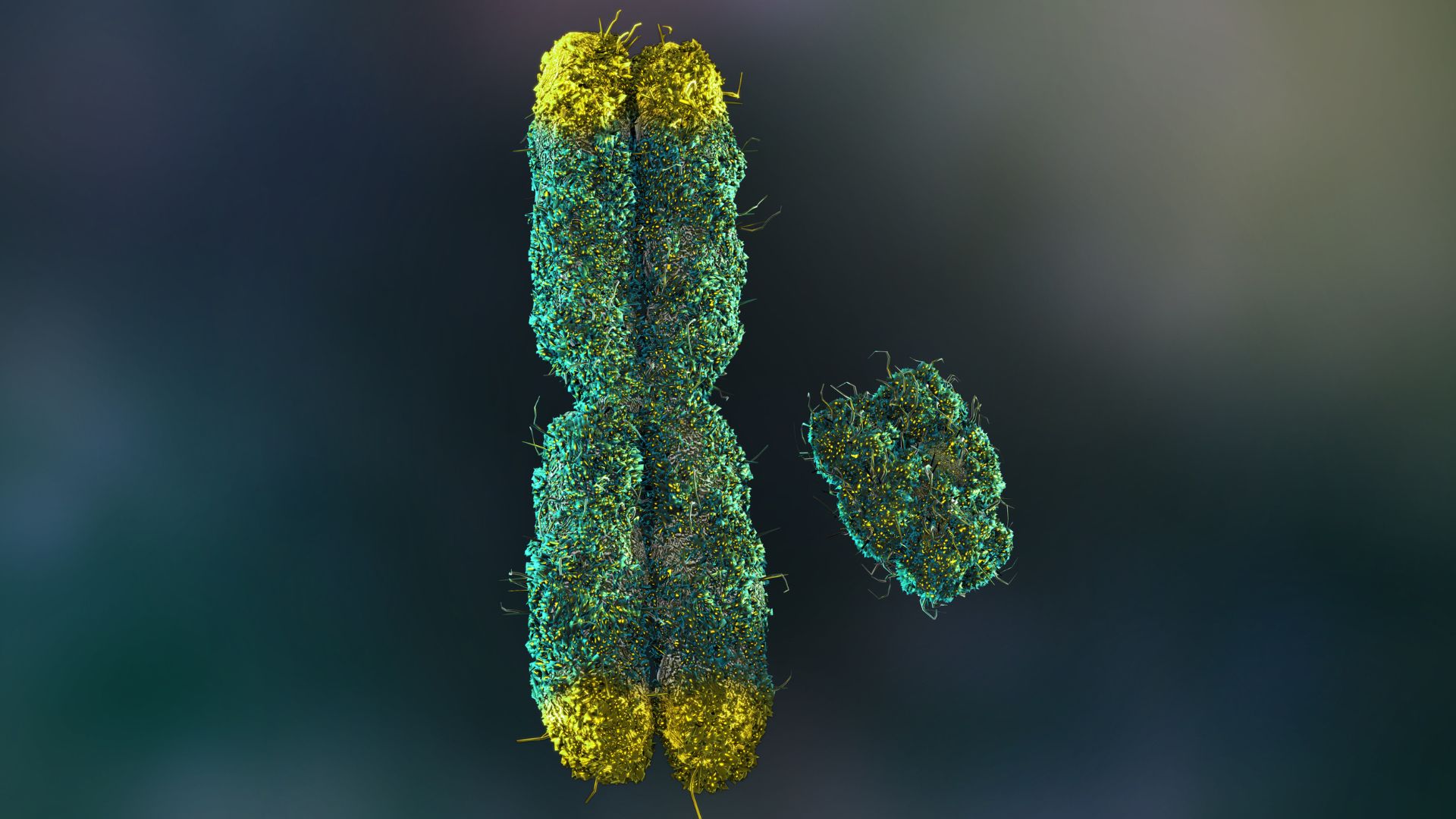Scientists made mice with Y chromosomes female by deleting just 6 tiny molecules
Scientists discovered that removing specific molecules from developing mice can completely reverse their sex from male to female.

Mammals' chromosomes have a huge influence over whether an individual develops as male or female — but a new study reveals that the pull of these sex chromosomes can be overridden by tiny molecules called microRNAs.
The study, published May 7 in the journal Nature Communications, showed that deleting the genes behind specific microRNAs could transform male mice into females in the womb, sparking a complete sex reversal.
"We did not expect that the results would be as spectacular as they are," study co-author Rafael Jiménez, a professor of genetics at the University of Granada, told Live Science.
Sex determination in mammals relies on a fine balance between "opposite" sets of genes — one that drives the development of female characteristics, such as ovaries, and another that produces male characteristics, such as testes. Early in an animal's development, the scales tip one way or another, leading to an irreversible cascade of steps that ends in the development of either set of sex organs.
"In a very early stage of our development, all the mammals have the capacity of being male or female, potentially," said study co-author Francisco Barrionuevo, a professor of genetics at the University of Granada.
Related: The human Y chromosome has finally been fully sequenced, 20 years after the 1st draft
A gene called SRY, which is only found on the Y chromosome, triggers the series of events that forms testes. The gene's absence in individuals with only X chromosomes results in the formation of ovaries. Scientists know a great deal about the genes involved in making the proteins needed for these processes. But a huge portion of mammals' DNA — including about 98% of the human genome — doesn't code for any proteins, so scientists were unsure what role these other genes play in sex determination, if any.
Sign up for the Live Science daily newsletter now
Get the world’s most fascinating discoveries delivered straight to your inbox.
Long considered "junk DNA," these stretches of genetic material are converted into molecules called non-coding RNA, rather than proteins. The RNA can affect many biological processes. About one-quarter of these molecules are microRNAs, which can attach to numerous genes and regulate their activity levels.
Out of thousands of known microRNAs, the team focused on a group of six known to interact with genes involved in sex determination. They deleted these molecules from growing mice fetuses that had either XY or XX chromosomes. The XX mice developed ovaries, as expected, but the XY mice showed early signs of developing uteruses and had ovaries indistinguishable from those in XX mice.
"We saw the gonad [under the microscope] and it was full of the signal for this female marker," Alicia Hurtado, first author of the study and a postdoctoral researcher at the Andalusian Center for Development Biology in Seville, told Live Science. To confirm the results, they repeated the experiments multiple times, using different strategies to delete the microRNAs.
For testes to develop properly in XY animals, the protein made by the SRY gene must be made in the appropriate amounts and at the right times. The absence of the six microRNAs in XY mice caused this protein to be made about 12 hours later than normal, the researchers found. This, in turn, impacted the production of a different protein that's essential for the growth of male sex organs. Ultimately, this chain of events led to the mice's sex reversal.
"[These findings] fit very well with what we know, except it brings another layer of complexity," said Serge Nef, a professor of genetic medicine and development at the University of Geneva who was not involved in the study. "It is one additional brick in our understanding of the whole [sex determination] process in mammals," he told Live Science.
While the study has only been done in mice, the six key microRNAs are found in all vertebrates and date back to the first vertebrates, about 500 million years ago. Therefore, it is very likely that this cluster of microRNAs works similarly in other mammals, as well — including humans.
Ever wonder why some people build muscle more easily than others or why freckles come out in the sun? Send us your questions about how the human body works to community@livescience.com with the subject line "Health Desk Q," and you may see your question answered on the website!

Sahana Sitaraman is a science writer based in Lausanne, Switzerland, specializing in biology. She particularly enjoys writing about unusual animal behaviours and the neuroscience behind them, mental health and women in STEM. She also dabbles in illustrating cool findings that pique her interest. In her free time, Sahana can be found out on a hike, acting it up with the local improv group or painting. She holds a bachelor's degree in microbiology from the University of Delhi, India and a master's and PhD in life sciences from the National Centre for Biological Sciences in Bangalore, India.









